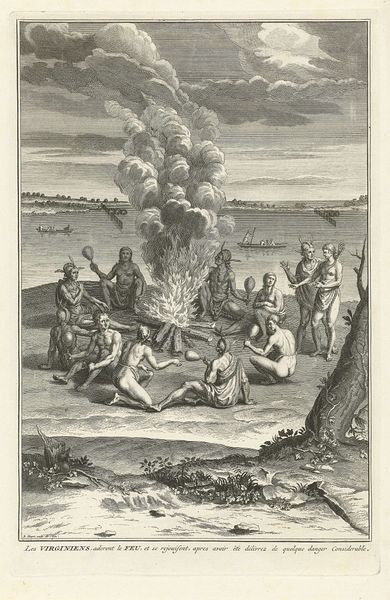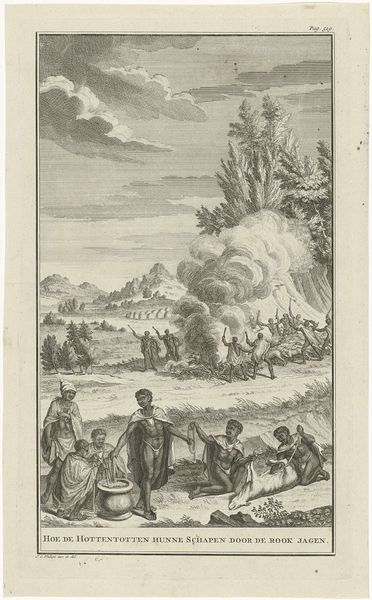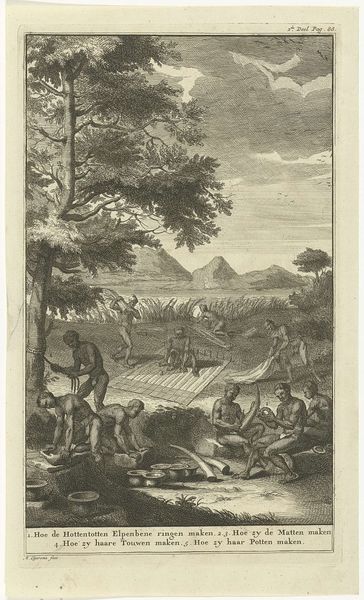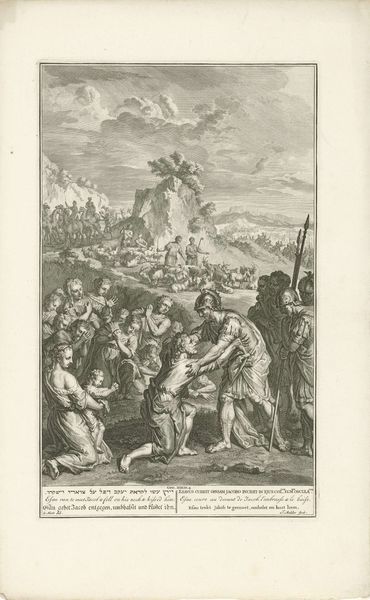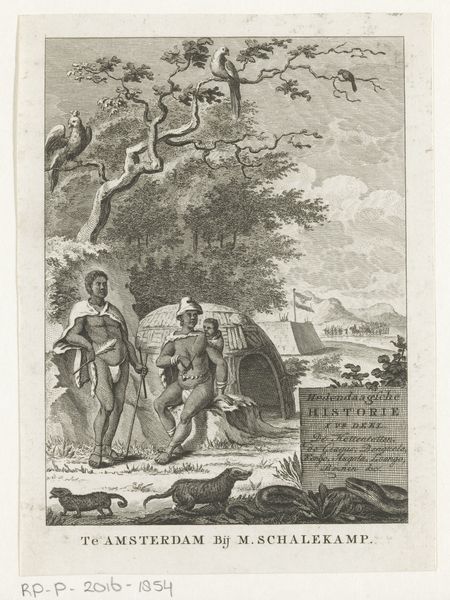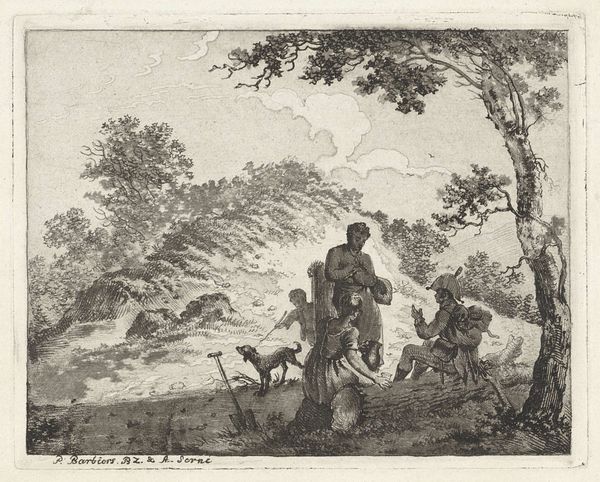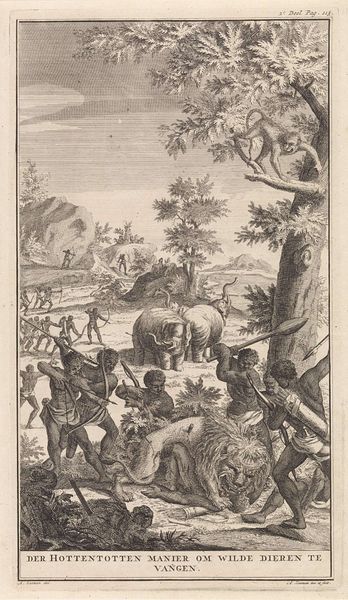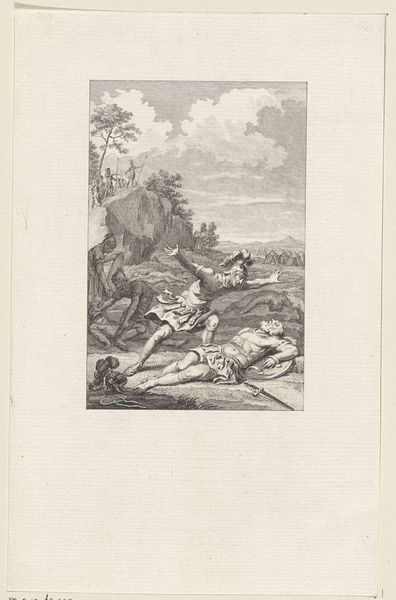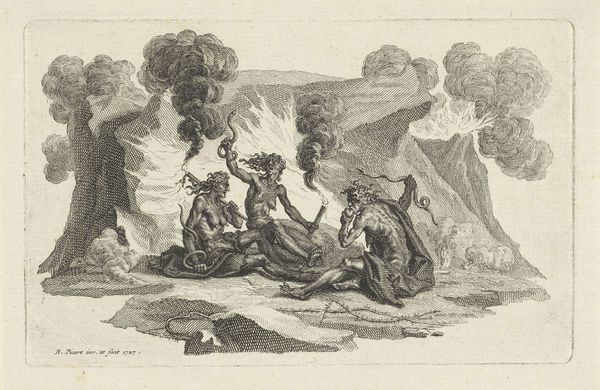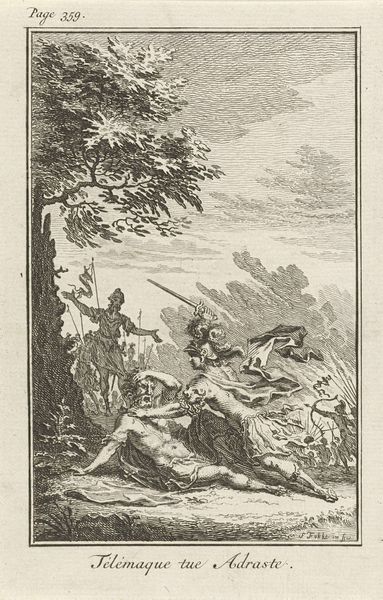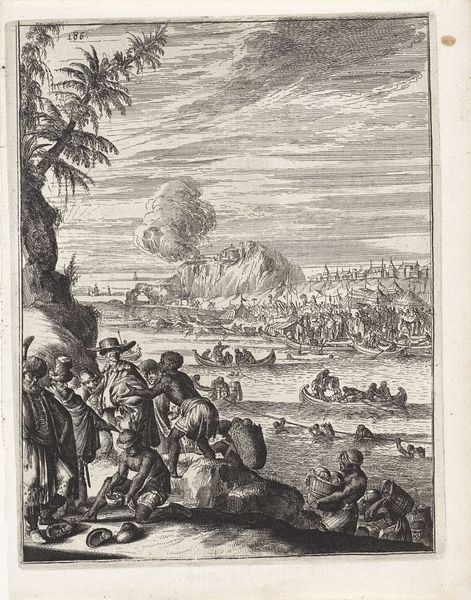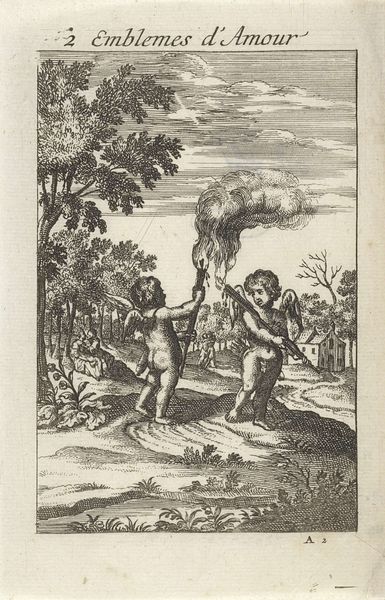
print, engraving
#
narrative-art
#
dutch-golden-age
# print
#
old engraving style
#
figuration
#
line
#
engraving
Dimensions: height 290 mm, width 171 mm
Copyright: Rijks Museum: Open Domain
Curator: This engraving, made by Matthijs Pool in 1727, is titled "Khoikhoi smelten en bewerken ijzer"—Khoikhoi smelting and processing iron. It resides here at the Rijksmuseum. What are your first impressions? Editor: The scene strikes me as somewhat idyllic, even serene, despite the fiery activity depicted. There's a certain detachment in the way the engraver presents this depiction of labor; it’s almost like watching a carefully choreographed performance rather than witnessing industrial activity. Curator: That detachment, I think, speaks to the work's function as a form of early ethnography, shaped by Dutch Golden Age sensibilities. It isn't just about depicting labor, but about classifying, recording a "foreign" practice for a European audience. See how the engraver meticulously details each step, almost diagrammatically. Notice the sequential numbering to further reinforce an “objective” study of an iron smelting process. Editor: Precisely! It reminds me of similar depictions of colonial life meant to justify or frame imperial projects through supposed scientific accuracy. Are these “objective” studies ever free from projecting inherent prejudices? This raises many questions about representation, doesn’t it? The romanticized landscape in the background adds another layer to that narrative; a sort of untouched paradise made more civilized via industry. Curator: It does invite such critique, definitely. Look, however, at the symbolic weight iron held cross-culturally. The ability to work with iron represented a significant technological and societal leap. Pool's decision to foreground it connects the Khoikhoi people to narratives of ingenuity and skill, even as his rendering remains filtered through a European lens. And notice how, through posture and musculature, the human figures possess an intrinsic vitality—one which can, through our contemporary reading, combat some of the possible depersonalization of their depicted labor. Editor: That’s an interesting counterpoint. I think this artwork serves as a strong reminder to always analyze historical portrayals within their specific political and social contexts. It also shows how loaded imagery can be—it's both a record and a re-presentation with so much more between those layers. Curator: Indeed. The work becomes a mirror reflecting not only its subject but also the evolving values of those who gaze upon it through the centuries.
Comments
No comments
Be the first to comment and join the conversation on the ultimate creative platform.

